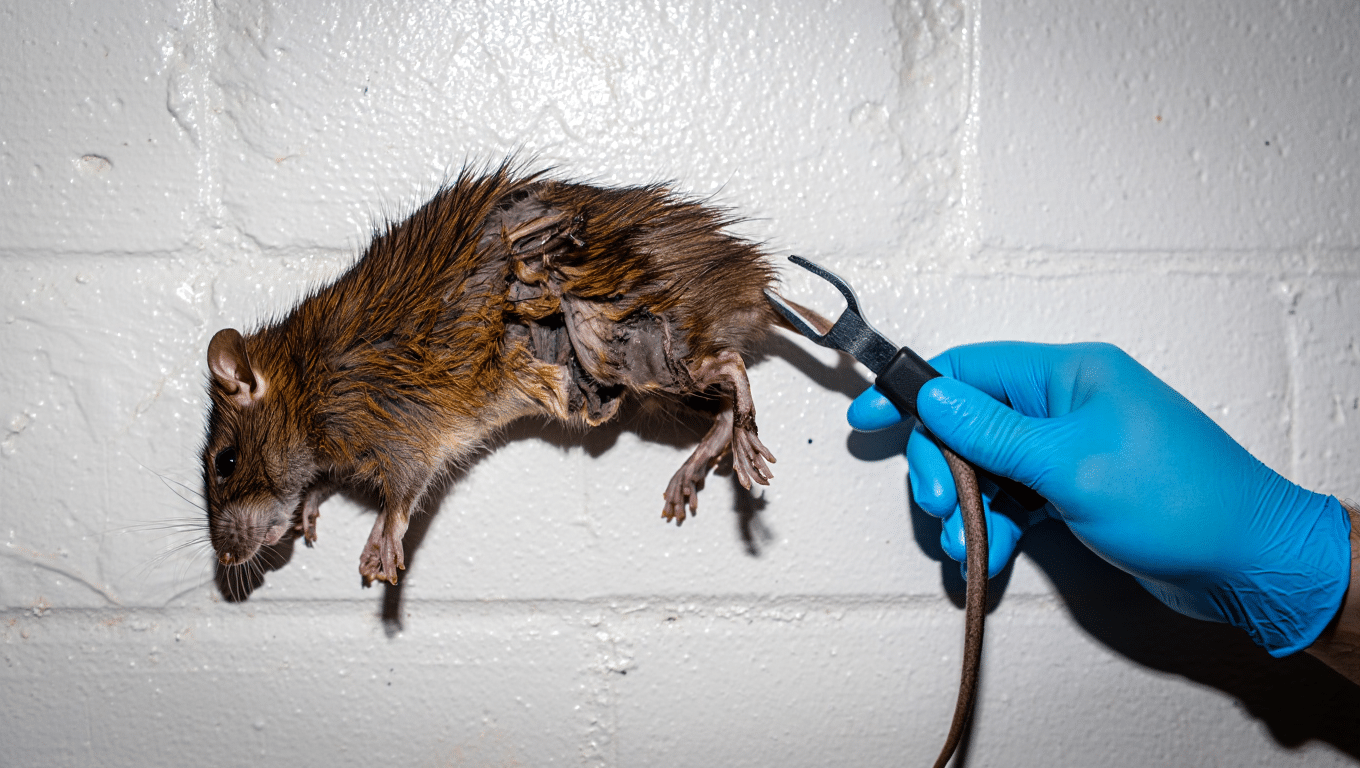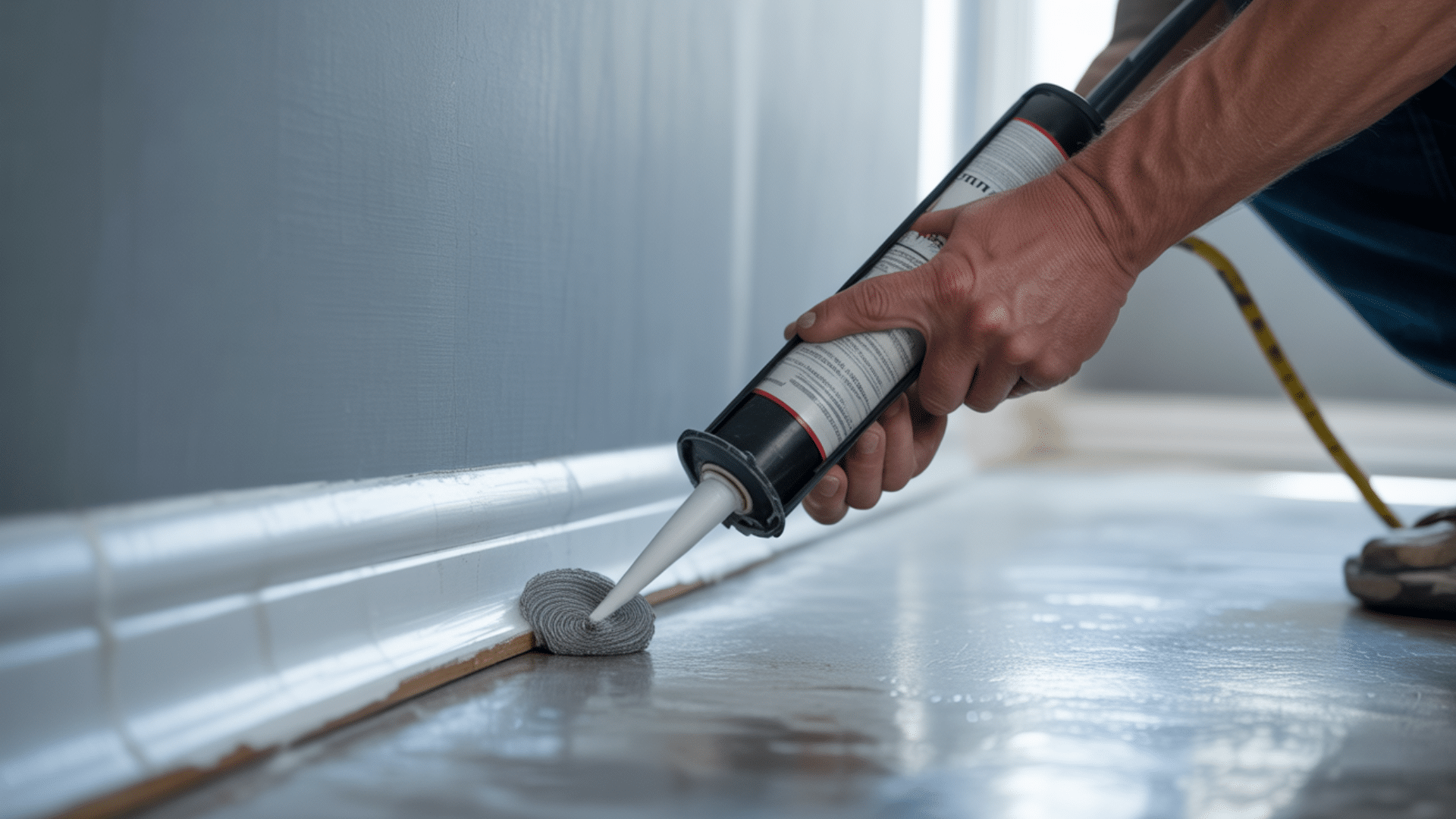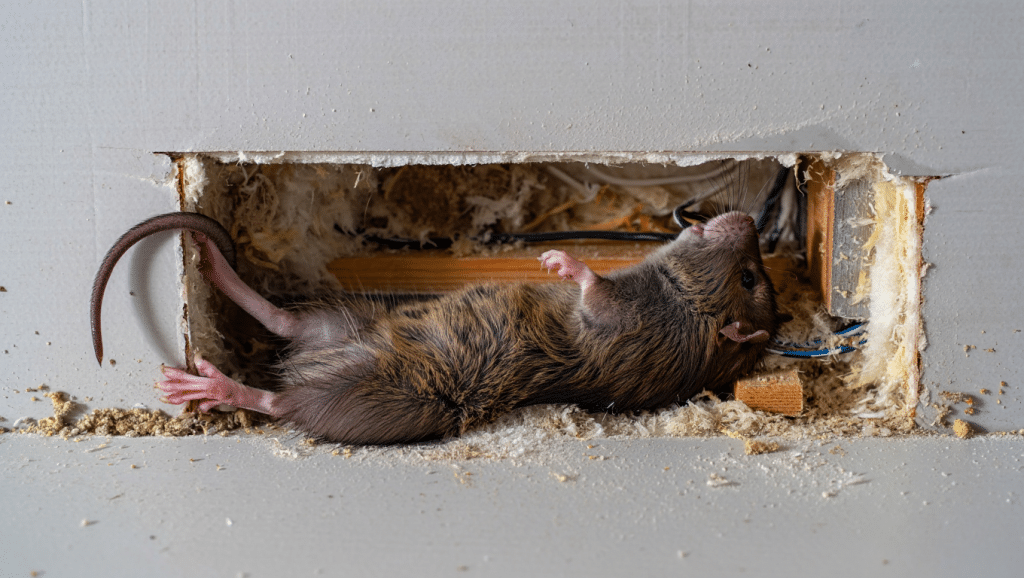Having rats in your home is a common and unpleasant problem. Sometimes, a rat may die inside a wall, releasing strong odors and posing a health risk.
Signs of a dead rat include a foul odor, an increase in flies in the area, and unusual stains on the walls. It is essential to recognize these signs early and respond promptly.
Taking prompt action helps mitigate health risks and prevent further damage to the home. Waiting too long can also attract other pests.
Knowing what to look for and responding right away keeps your home safer, cleaner, and more comfortable for everyone.
Confirming the Problem
Finding the exact source of a bad smell can be challenging, but it is crucial to do so. Confirming the problem early helps you act faster and avoid bigger damage.
- The first important step is to identify the source of the strong smell accurately.
- If a dead rat is the cause, the smell typically worsens over time and remains concentrated in one part of the home.
- Rats often die in hidden spots, such as behind appliances, inside wall spaces, or near warm areas like water heaters or stoves.
- To track the smell, use your nose carefully and tools such as moisture meters or infrared cameras.
- These tools help identify unusual changes within walls that can indicate the presence of a hidden dead animal.
| Tool | Purpose | Example Use |
|---|---|---|
| Moisture Meter | Detects moisture levels in walls to locate damp spots where a rat may have died. | Useful for identifying areas where fluids from decomposition may accumulate. |
| Infrared Camera | Captures temperature variations within walls. | Helps find hotspots where the body may be decomposing. |
| Borescope | A small camera on a flexible tube to inspect hidden areas. | Allows you to inspect behind walls and inside tight spaces visually. |
| Odor Detection Kit | Measures air quality and detects lingering smells. | Helps identify areas with higher concentrations of odor. |
Health Risks
Decomposing rodent bodies pose serious health risks due to the presence of harmful bacteria and airborne particles.
These dangers can lead to diseases and exacerbate breathing issues, particularly for vulnerable populations. Additionally, the decay attracts pests, compounding the problem.
- Decomposing rodents can carry harmful bacteria that spread diseases such as Leptospirosis and Hantavirus.
- Airborne particles from decay can exacerbate breathing problems, particularly for children, the elderly, and individuals with weakened immune systems.
- The smell attracts pests, including flies, maggots, and scavengers, exacerbating the situation.
DIY Removal Options

Necessary Tools and Materials:
- Personal Protective Equipment (PPE): Masks (preferably N95 or higher), gloves, and goggles to prevent contact with harmful pathogens.
- Cutting Tools: Drywall saws or oscillating multi-tools to access the affected area.
- Disposal Containers: Heavy-duty plastic bags and rigid containers for safe transport and disposal.
- Cleaning Supplies: Industrial-grade disinfectants, odor neutralizers, and absorbent materials.
The process involves carefully cutting into the drywall to access the carcass, removing it with minimal disturbance, sealing it in double bags, and immediately cleaning the area.
Contaminated materials, such as insulation, should be removed and disposed of properly. All waste must be disposed of according to local health regulations.
Bonus Tip: If you are feeling uneasy about the job, do not risk your health or safety. Use a long-handled grabber or tongs to keep your distance from the carcass. And remember, when in doubt, call in the experts, your safety is the top priority!
Cleaning and Sanitizing
Following the removal of the carcass, cleaning and sanitizing procedures are crucial to eliminate residual bacteria and persistent odors.
Effective strategies include:
- Odor Neutralization: Utilizing enzymatic cleaners, ozone treatments (with caution), or activated carbon-based products designed to break down odor molecules chemically.
- Deep Cleaning Protocols: Physically cleaning all surfaces with detergent prior to disinfectant application ensures optimal sanitization.
- Safe Sanitization Practices: Employing EPA-registered disinfectants and adhering to recommended contact times while ensuring proper ventilation.
- Air Purification: Installation of HEPA filtration systems, activated carbon filters, or UV air purifiers can significantly improve indoor air quality by capturing particulates and neutralizing volatile organic compounds (VOCs).
Prevention Strategies

Preventing future rodent intrusions requires a creative and proactive approach.
Start by sealing entry points, inspecting and sealing cracks, gaps, and vents with durable materials like steel wool or caulk to block access.
Implement ongoing pest control measures, including routine inspections, baiting programs, and exclusion practices, to effectively manage rodent populations.
Exterior maintenance is equally important; regularly clear debris, trim vegetation away from the home, and store trash in sealed containers to eliminate potential attractants for pests.
Finally, stay vigilant for early warning signs, such as droppings, gnaw marks, and other indicators of rodent activity, allowing for timely intervention before an infestation becomes established.
Conclusion
Dealing with a dead rat within a wall is an unpleasant but critical responsibility for homeowners.
Prompt identification, cautious removal, thorough sanitization, and preventive measures can restore a safe and healthy living environment.
Immediate action is essential to minimize health risks, structural damage, and pest infestations.
Homeowners are encouraged to seek professional assistance when in doubt and to establish long-term pest management strategies to prevent recurrence.
Frequently Asked Questions
How Long does the Smell Last?
The odor from a decomposing rat may persist for several weeks, depending on environmental conditions such as temperature, humidity, and ventilation.
Can I Use Air Fresheners Instead of Removal?
No. Air fresheners merely mask the smell temporarily and do not address the underlying health hazards associated with decomposition.
Is Homeowners’ Insurance Likely to Cover This?
Coverage varies by policy. Some homeowner policies exclude damages caused by pests, but it is advisable to consult your insurance provider for specific terms.
What if I Can’t Find the Exact Location?
If the source cannot be accurately located, it is highly recommended to engage a professional who can use specialized equipment to detect the carcass without extensive property damage.















